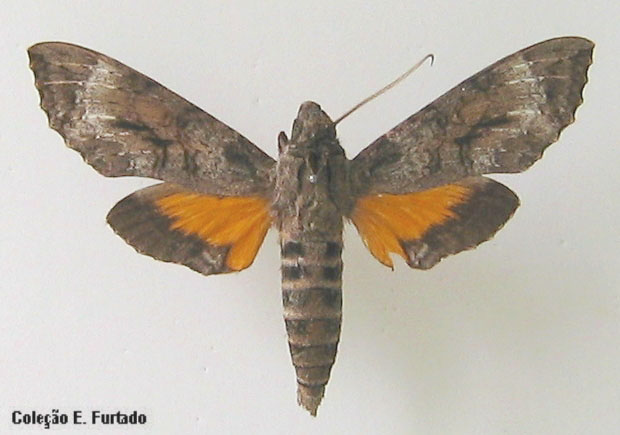Isognathus australis
B. P. Clark, 1917

Isognathus australis, male: 70 mm, January,
Santa Leopoldina, Tirol, 600-800 m, Espírito Santo, Brazil
courtesy of Eurides Furtado.
This site has been created by
Bill Oehlke at oehlkew@islandtelecom.com
Comments, suggestions and/or additional information are welcomed by Bill.
TAXONOMY:Subfamily: Macroglossinae, Harris, 1839 Tribe: Dilophonotini, Burmeister, 1878 Genus: Isognathus G. Felder & R. Felder, 1862 ........... Species: australis B. P. Clark, 1917 |